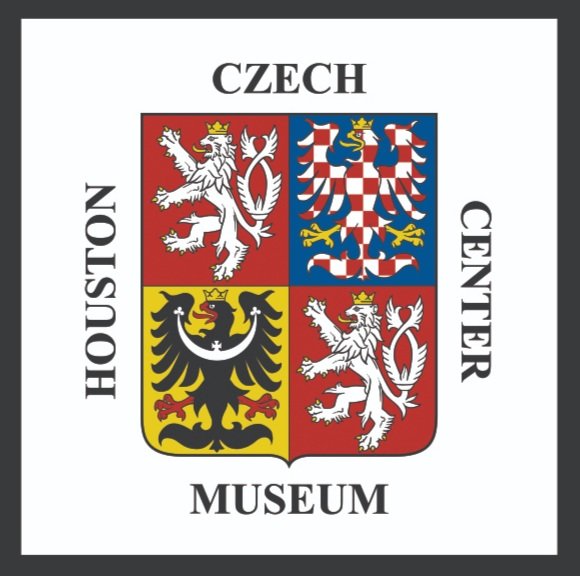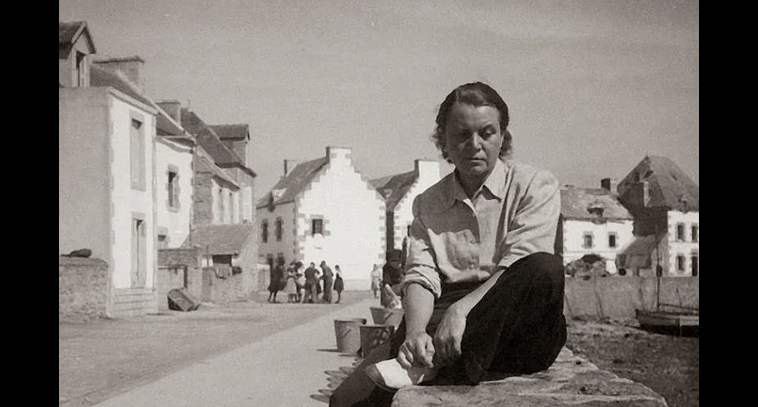Inspired by the American holiday, many nations in the world celebrate Flag Day, including Czechia. Before Czechia, there was Czechoslovakia, whose flag, created in 1918, featured 2 horizontal stripes, white on the top and red on the bottom. The flag changed to include a blue wedge from the left and has remained this way since, including after the separation of Czechoslovakia into the Czech Republic and Slovakia.
Toyen: Czech Surrealist Artist (1902-1980)
Toyen, born Marie ؤŒ±ً°ù³¾أ²ش´ا±¹أ،, was a foundational Czech Surrealist artist who explored gender expression. In her early days, she traveled to Paris where she promoted a poetry-inspired art style called "Artificialism." Her own art explored gender, politics, and eroticism, which challenged viewers. After the Communist takeover of Czechoslovakia, Toyen lived in Paris, creating new, expressive pieces, for the rest of her life.
Pride, Country, and a Balance Beam
Vؤ›ra ؤŒأ،²ُ±ô²¹±¹²ُ°ىأ، was a Czechoslovakian Olympian gymnast, born in May 3, 1942 and raised in Prague. Her sense of pride came from more than her sport, as it centered around her love for Czechoslovakia and her people, such that she signed the Two Thousand Words manifesto during Prague Spring. Even through possible persecution she continued to train for the Olympics. After the Olympics, the persecution continued, but she remained resolute though her life, earning her the love of the Czechoslovakian people.
Mother's Day in Czechia: Charlotte Masaryk
Through history, celebrating Mother’s Day in the Czech Republic was more complicated than one could imagine. It begins with the wife of Tomas Masaryk, Charlotte, who fought for women’s rights and taught her daughter, Alice Masarykova, to do the same. After her mother’s death, Alice established Mother’s Day in 1923. The complications of Mother’s Day lasted for a long time, into Czechoslovakia’s Communist occupation.
Rock Music in Czechoslovakia
The history on rock music in Czechoslovakia begins with its introduction in the early 1950s, beginning apolitically. By 1968, the apolitical aspect changed, in response to the 1968 Soviet bloc invasion, causing rock music to finally rebel and criticize the government, through satire and cryptic messaging, as the lyrics and content of rock songs were monitored.
Czechoslovakia and their only naval battle
Despite being a landlocked nation, Czechoslovakia had a naval army, one which fought a single battle. This singular battle took place on Lake Baikal in Russia during WWI. Being that Czechoslovakian soldiers fought so far away from their own nation and that they seemed unwelcome in Russia, the situation of their naval military grew more complicated.
Little Crumbs by Hana ´³³ـ°ù²¹ؤچأ،°ى´ا±¹أ،
Prague Travel Guide
A Short History of Pilsner Urquell
The Church of St. Cyril and Methodius: A History Old and New
Andy Warhol
Cinema Under Communism: The Czech New Wave
The Czech New Wave was an important film movement led by daring, rebellious film directors in the sixties. Since the nationalization of the film industry in 1945, cinema had gone stale. In the fifties, each film adhered so tightly to the standards set by the communist government that moviegoers found themselves bored in the theatres. Plot threads were , an aspect that would be criticized extensively during the movement (Kehr 2008).
Czech Street Food
Food is one aspect of culture that is almost universally accessible. For many traveling, trying different cuisines, especially street foods, is an exciting part of visiting a new country. The Czech Republic has its own unique kitchen, and although the popularity of street foods is still growing, there are some dishes that are well-known in the country.
Vؤ›ra ؤŒأ،²ُ±ô²¹±¹²ُ°ىأ،: Athlete and Activist
Athletes have long been using their high-visibility platforms to comment on social issues and raise awareness. Vؤ›ra ؤŒأ،²ُ±ô²¹±¹²ُ°ىأ،, a gymnast from the now Czech Republic, is not only famous for her unparalleled success at the Olympic Games but her strong stance against the Soviet invasion of her country.
Prague Spring
New Years in The Czech Republic
The holidays are upon us and I thought we might look into Czech traditions for celebrating the New Year. In the Czech Republic, New Year’s Eve is called Silvestr, for the anniversary of the consecration of Pope Sylvester I, a saint who served as Pope of the Western Church from 314 to 335. Since the adoption of the Gregorian calendar in 1582, the December 31st feast date has coincided with New Year’s Eve
























